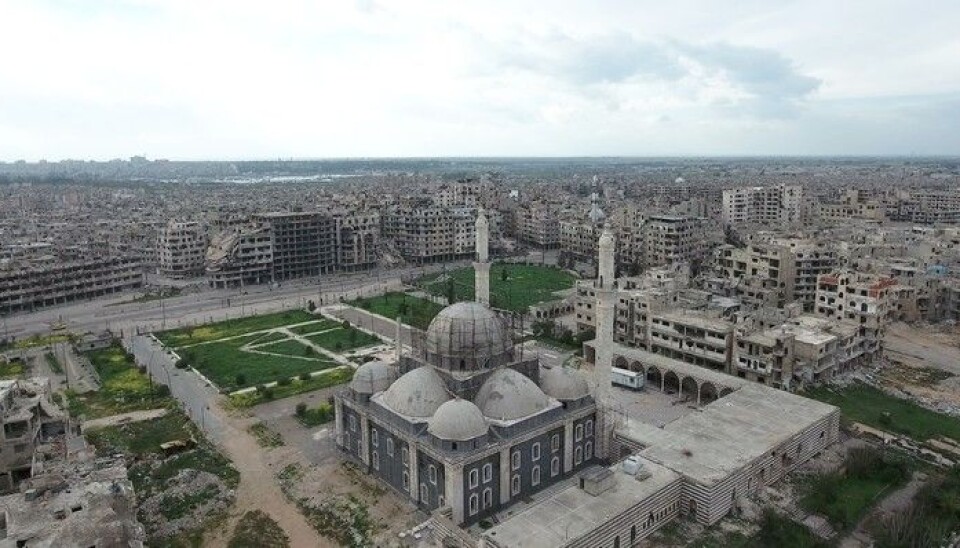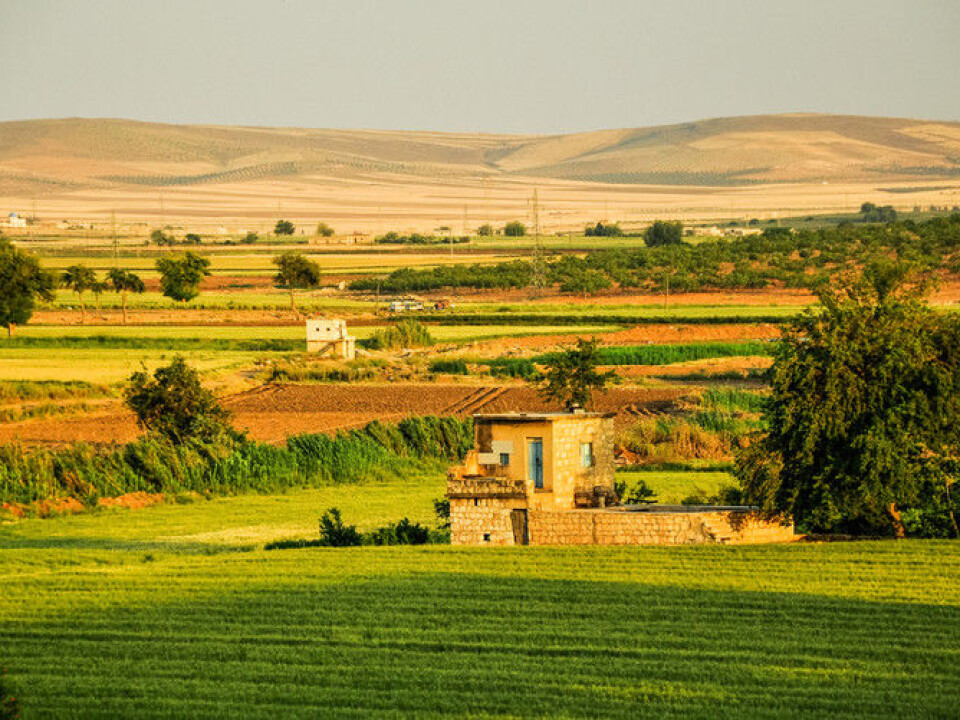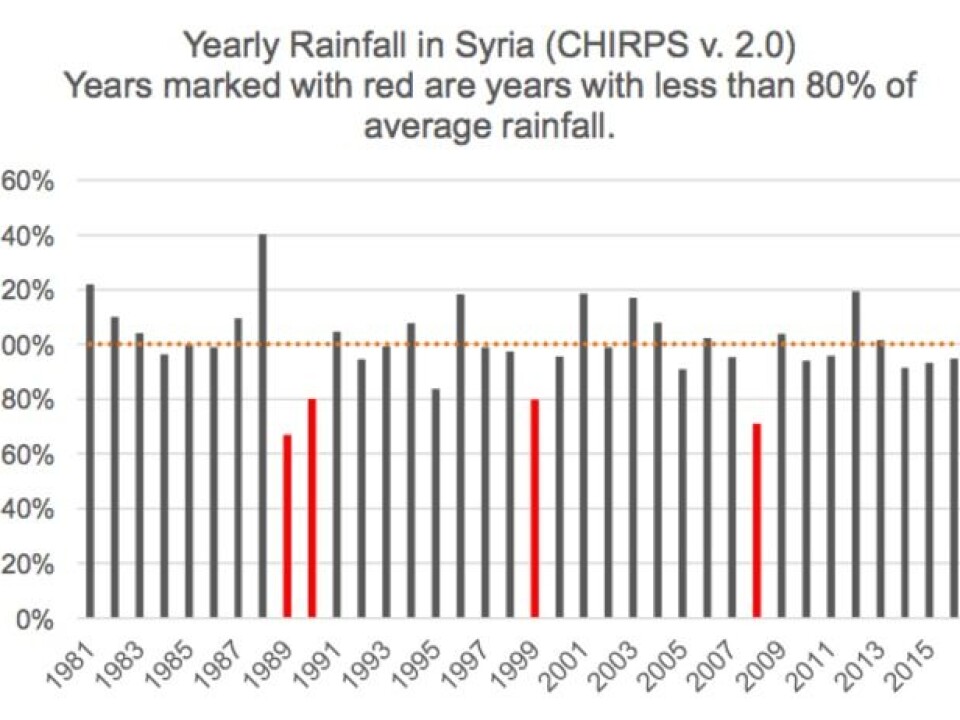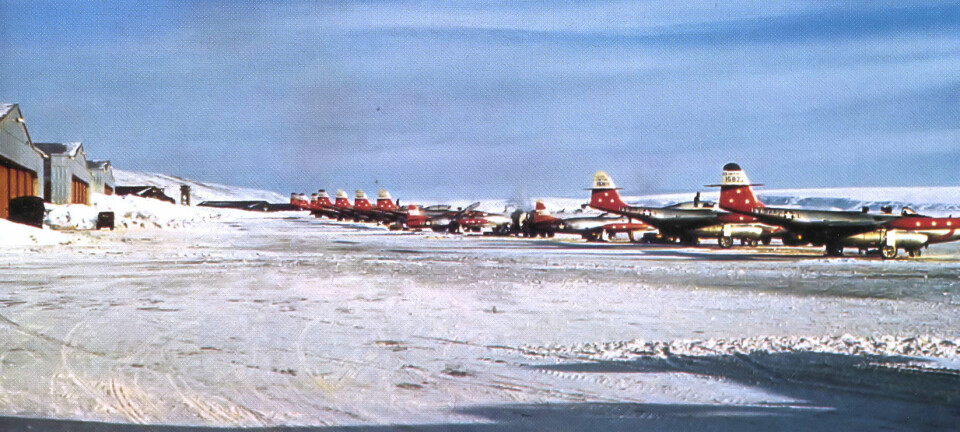
Is Syria really a 'climate war'? We examined the links between drought, migration and conflict
OPINION: Putting too much emphasis on the climate overlooks the role of political and socio-economic factors in determining a community’s vulnerability to environmental stress.
The Syrian civil war has raged for more than six years now. You’ve probably heard the following story linking it to climate change: an intense drought, made more likely thanks to global warming, caused “mass migration” within the country from rural to urban areas, which in turn contributed to the 2011 uprising which then escalated into civil conflict.
This narrative assumes that there is a relationship between drought, migration and conflict. However, the connection is not so clear-cut. Our worry is that putting too much emphasis on the climate overlooks the role of political and socio-economic factors in determining a community’s vulnerability to environmental stress. Conflict is not inevitable in the face of drought.
That’s one conclusion from our work on drought and resource management in Syria. In our research, we broke down the popular “climate war” claim into two parts – the link between drought and migration, and the link between migration and conflict – to see if and how these factors fit together.
We started with the very idea of environmentally induced migration. The problem is that it’s very difficult to determine the actual reasons why people leave home and look for opportunities elsewhere – a changing environment is likely to be only one among several factors and not necessarily the most significant. For instance, having the capital to move is a major factor for migration, so only those who can afford to move in response to drought are able to.

In the case of Syria, there has been no scientifically proven link between reduced rainfall or failed crops, and rural-urban migration. The evidence that has been used to prove the drought-migration link comes from displacement reports published by the Syrian government and UN assessment missions. The two phenomena are claimed to be linked because they coincided in time. Scientifically, however, this is not enough.
The drought which affected Syria has been described as a severe, multi-year drought that lasted between 2006 and 2010. But rainfall levels in 2006, 2007, 2009 and 2010 were close to normal, both in Syria as a whole and in the northeastern “bread basket” region. This suggests that only 2008 was a real drought year.
A drought can be devastating for one community but barely noticed in another. Just look at the Kurdistan region of Iraq, which was affected by the same dry period as Syria but without any mass migration flows at the time. A community’s vulnerability to drought is more important than the drought itself.
Various factors meant Syrian farmers were particularly vulnerable to drought. An overuse of water to nourish thirsty crops such as cotton had left the land dry and degraded. The government had also cancelled subsidies for fuel used to power irrigation pumps and to take produce to market – and it had dismantled a micro-finance network that had served as an income security net. A national drought strategy that had been approved in 2006 was not implemented once the rains dried up.
From migration to conflict

The second stage of the Syrian narrative is that migration causes violent conflict. While some research does suggest a connection, there is also evidence suggesting no strong link at all.
By simply looking at migration flows past and present, we can see that violent conflict is rare. In fact, migration may actually strengthen social and economic conditions in receiving communities in the developing world. While urban migration does not cause development per se, sustained economic development does not occur without it.
Religious, social and ethnic integration may also improve as contact with one another increases. However, migration can also promote conflict, through increased competition for resources and services, and tensions due to ethnic and demographic changes. The potential for conflict in a given urban space is mitigated by factors such as the destination area’s ability to absorb migrants, the permanency of people’s migration, and whether there is already social and/or political instability.
In the case of Syria, there was a mass exodus of farming families from the worst drought-affected areas in the north of the country (the agricultural bread basket of Syria) to the nearby cities of Damascus, Hama and Aleppo. However, what role this migration played in helping to fuel the uprisings and then the conflict is far from clear.
The initial protests broke out in the city of Daraa, in the south-east of the country, in response to the arrests and mistreatment of a group of youths allegedly caught painting anti-government graffiti. What started as a provincial uprising spread to other parts of the country where deep-seated socio-political dissatisfaction had been simmering for years.
What this sequence of events highlights is that the conflict is a culmination of several interconnected factors that had been steadily developing over decades. While drought, migration and conflict may all be linked by association, such links are not established facts and, in the case of Syria, they are difficult to gauge.
![]() What can be said with much greater certainty is that economic struggles stemming from drought vulnerability, the loss of subsidies and the loss of agricultural wages did contribute to widespread dissatisfaction with the government. And it was this dissatisfaction which served as a rallying cry to unite people in opposition.
What can be said with much greater certainty is that economic struggles stemming from drought vulnerability, the loss of subsidies and the loss of agricultural wages did contribute to widespread dissatisfaction with the government. And it was this dissatisfaction which served as a rallying cry to unite people in opposition.
This article was originally published on The Conversation. Read the original article.

The authors do not work for, consult, own shares in or receive funding from any company or organisation that would benefit from this article.









